Details on Grape Growing
Grape Bearing Habit
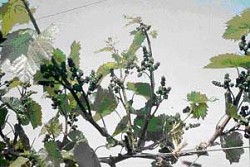
Grape flowers form on new shoots, and bloom occurs in May. (Photo by Ed Weber)
Growing Grapes from Cuttings
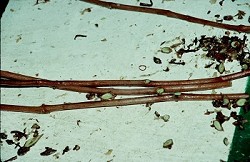
In the winter cut off a one-year-old cane that is about ½ in. thick and that was well sunlit the previous season. Cut it into 12-18 in. sections and cut off all the buds except for the top two. Stick it into loose, well-drained soil so the top two buds are above ground. Train the new shoots up a stake and then onto a trellis. Photo by Ed Weber.
Cane Pruning
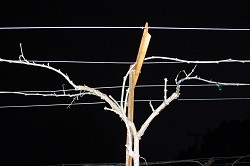
Some grape varieties produce little or no fruit from shoots that grow from buds at the base of one-year-old canes, so they should not be spur pruned. To cane-prune, select about four one-year-old canes that were well sunlit the previous season. Wrap them around wires and cut them to 10-14 buds long. Also leave some spurs to form next year’s replacement canes.
Spur Pruning
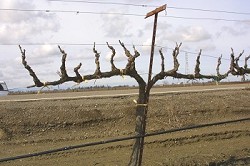
This cordon-trained vine has been spur pruned for many years. There are about 7 spurs on each cordon, each about 6 in. apart. Each year the “arm” (old spur wood) may get longer and longer, which is OK as long as there are still wires above the spurs to catch the new shoots.
Spur Pruning
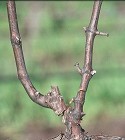
The two-bud spur selected the previous winter produced two shoots. To create a new spur this year, select the lower cane (to keep the arm from growing too long) and cut it to two buds long. Remove the upper cane. Weaker canes can be cut to one bud. Photo by Ed Weber.
Arbor Pruning
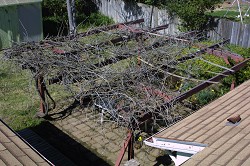
This rickety arbor had a vines that hadn’t been pruned in several years, making a mess that was difficult to spray, manage, and harvest.
Arbor Pruning
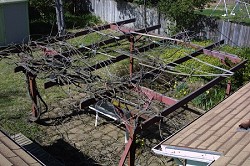
After pruning, only healthy one-year-old canes and necessary older wood were left, and the canes were cut to 10-14 buds long.
Arbor Pruning
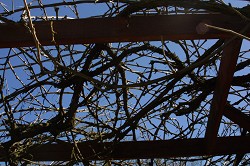
Before pruning, it was a tangled mess.
Arbor Pruning
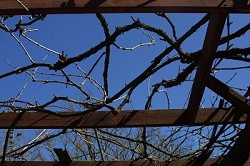
After pruning, only one-year-old canes and the supporting older canes were left.
Cluster and Shoot Thinning
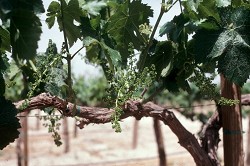
Just like fruit thinning, cluster thinning of table grapes can increase the size of the fruit (grape berries). Remove all but one cluster per shoot, and you can also cut off the bottom 1/3 of the cluster. Shoot thinning, done in early to mid spring, can open up the canopy, making it easier to spray and manage the grapes. Thin to two shoots per spur (the two shoots produced by the 2-bud spur). In some cases, lower shoots with fruit can be selected and the upper shoot removed. Photo by Ed Weber.
Girdling
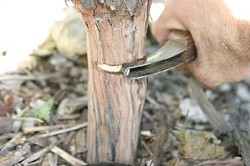
Girdling can be used on seedless varieties 10-14 days after full bloom to increase fruit size. See “Girdling” write-up (Link). (Will have new photo)
Powdery Mildew
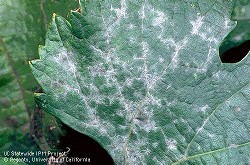
Powdery mildew causes white, powdery growth on leaves in late spring and summer. If not treated, this disease is often so bad that fruit remains small and does not ripen. See write-up (Link).
Powdery Mildew
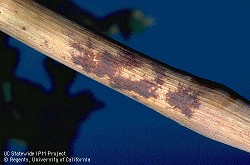
Scars remain on the canes in the winter after summer disease.
Erineum Mites
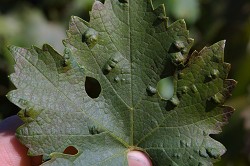
These tiny mites cause puckering on the leaves. The damage is only cosmetic, so treatment is not essential. Regular spraying or dusting of sulfur for powdery mildew prevents this damage, as does soap sprays in the spring.
Erineum Mites
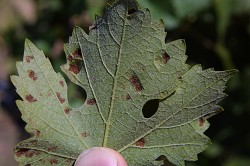
Underside of leaf.



